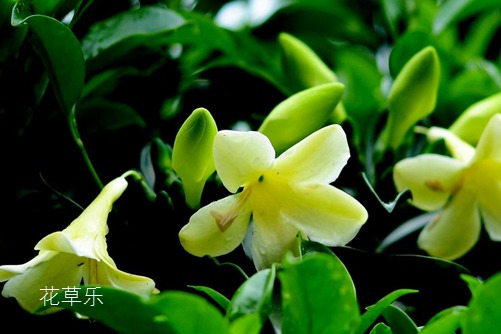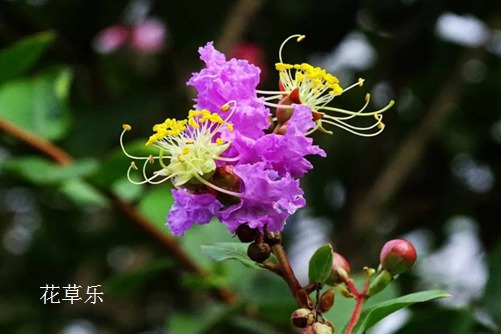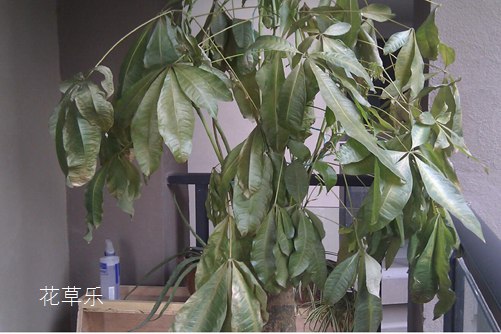What if African jasmine leaves turn yellow? learn the following tips so that you no longer have to worry about African jasmine leaves.
African jasmine is a plant that many people like, thick green, give people a vibrant feeling, very fresh, is a very good ornamental plant. Now many people will raise African jasmine at home, but improper maintenance in the breeding process will appear symptoms such as yellowing leaves, then how to prevent African jasmine leaves from yellowing? Let the editor of Hua Cao Le teach you some tricks.
What if the African jasmine leaves turn yellow? learn the following tips so that you no longer have to worry about the African jasmine leaves yellowing.

What if the African jasmine leaves turn yellow:
When you see that the old leaves of your African jasmine are yellow, while the new leaves are normal, it shows that there is a lack of potash fertilizer. Fertilize twice with compound fertilizer or potassium nitrate and potassium dihydrogen phosphate, each time 10 days apart, its symptoms will be relieved after half a month.
Potted African jasmine requires sufficient light, or placed near the window, not suitable in too dark places, otherwise it will cause the leaves to lose green yellowing or fall off. If the leaves of African jasmine turn yellow and fall off, it is likely to be due to stagnant water and rotten roots, and the soil must be changed in time to make it better.
African jasmine needs adequate phosphorus and potassium fertilizer during its growth period, but most people focus on nitrogen fertilizer when applying fertilizer. Because they think that nitrogen fertilizer can grow leaves and ensure that the leaves are bright green, but they did not expect that nitrogen fertilizer also hinders the differentiation of flower buds. Therefore, in the growing season, especially in the bud period, it is necessary to apply less nitrogen fertilizer and more phosphorus and potassium fertilizer. In addition to using rotten bone meal and poultry manure as base fertilizer, bone and poultry manure rotting leachate or available phosphorus and potassium fertilizer can also be used as topdressing.
Will African jasmine blossom
African jasmine has to grow to a large size before it can bloom, and the Corolla should be more than 1 meter in diameter. Once it blossoms, it blooms every year, white flowers bloom in late spring and early summer, and the flowers are very fragrant. The florescence is from May to June, with terminal flowers and Corolla white or yellow-white. Inflorescences erect terminal, with 1 to 3 flowers, with very short total pedicels, Corolla white, funnel-shaped, fragrant, upper 5-lobed, the whole Corolla trumpet-shaped. African jasmine likes the sun very much, and if the balcony of the home can not fully see the sun in one day, the shade environment of African jasmine may be too long, the leaves are sparse, and the flowers are few or even do not bloom. To this end, to move the flowerpot to a sunny place for maintenance, you can also move outside every weekend to receive 3-4 hours of direct sunlight. If your African jasmine has been raised for 3 or 4 years, increase the light and it may blossom in the fifth year.
Conclusion:
The effect of African jasmine is to relax people, as long as you take good care of it, you can add a touch of green to protect your eyes in your life. When you see the African jasmine leaves turn yellow, according to the maintenance method told you by the editor, your African jasmine can not only be evergreen all the year round, but also likely to produce beautiful flowers.
Time: 2019-04-29 Click:
- Prev

Erkang, come and have a look at your crape myrtle-symptoms and control methods of diseases and insect pests in crape myrtle
It seems that it is better to be intoxicated and beautiful, and the wind is deceived by dew pressure. Who says there are no red flowers for a hundred days, and crape myrtle blossoms for half a year. Yang Wanli crape myrtle, alias Bai Rihong, has been the darling of the literati since ancient times. Yang Wanli's crape myrtle is lifelike, describing a vivid and beautiful picture for us. But
- Next

No wonder your rich tree has lost its leaves. It turns out that you did not do so.
Many friends have raised rich trees, but they often lose their leaves as soon as they shake them. Why on earth is this? Why do some people's wealth trees grow so green and even blossom and bear fruit, while the leaves of your wealth trees gradually wither or even fall off? The only way to find out why
Related
- Fuxing push coffee new agricultural production and marketing class: lack of small-scale processing plants
- Jujube rice field leisure farm deep ploughing Yilan for five years to create a space for organic food and play
- Nongyu Farm-A trial of organic papaya for brave women with advanced technology
- Four points for attention in the prevention and control of diseases and insect pests of edible fungi
- How to add nutrient solution to Edible Fungi
- Is there any good way to control edible fungus mites?
- Open Inoculation Technology of Edible Fungi
- Is there any clever way to use fertilizer for edible fungus in winter?
- What agents are used to kill the pathogens of edible fungi in the mushroom shed?
- Rapid drying of Edible Fungi

